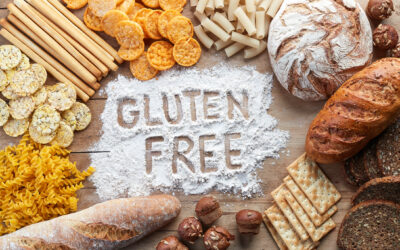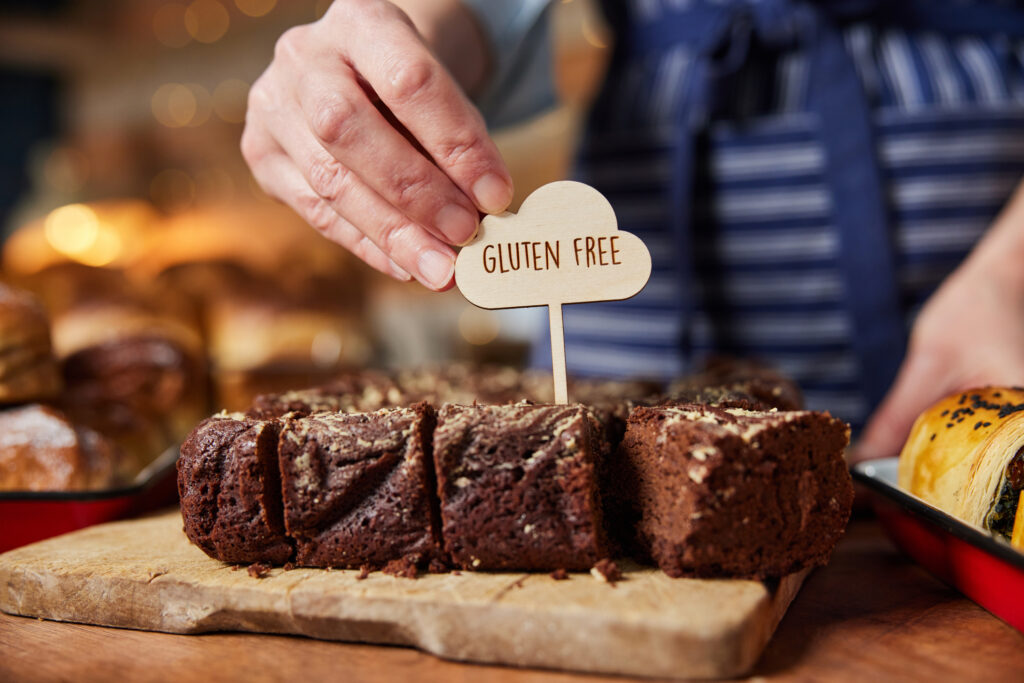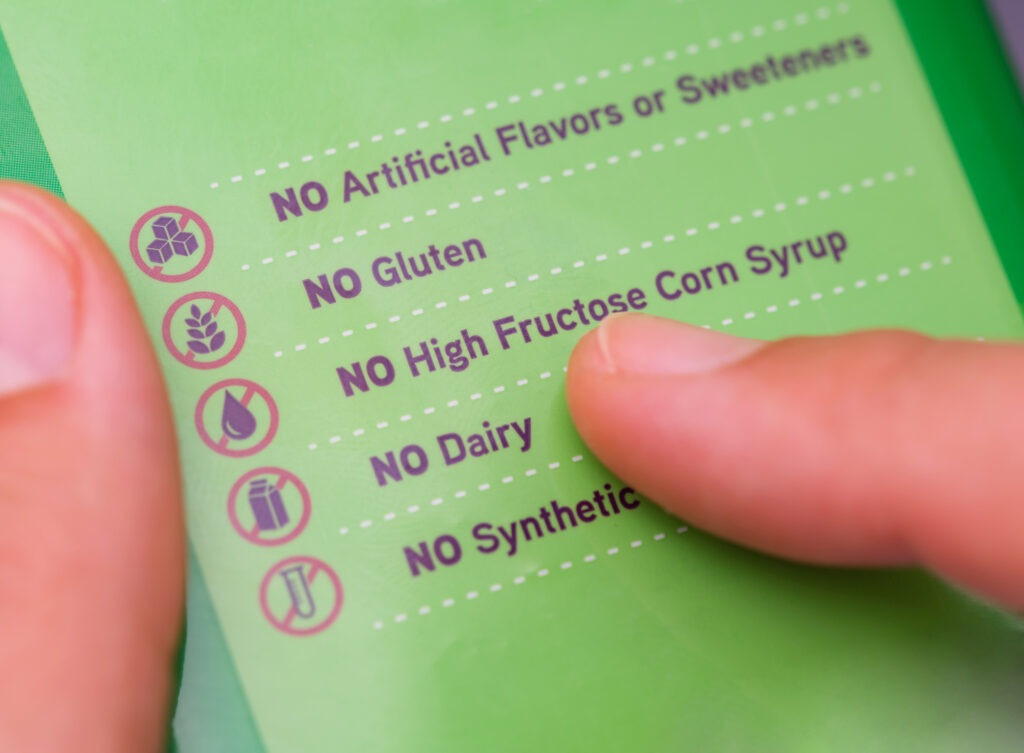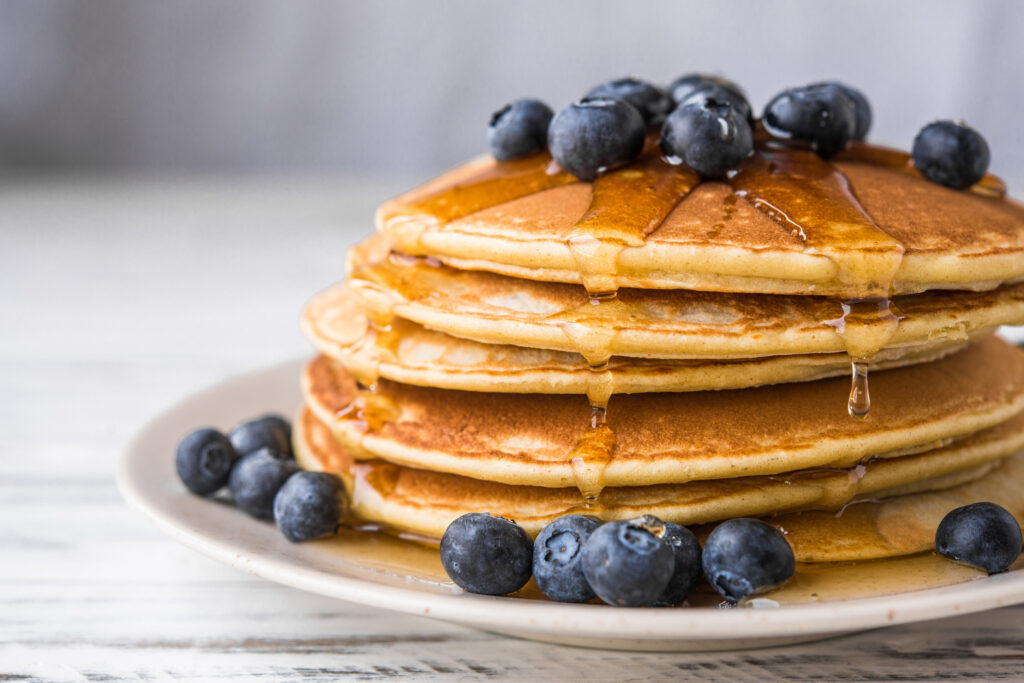
Coeliac disease is a serious autoimmune condition which affects 1 in 100 people in the UK. When individuals with coeliac disease consume gluten (a protein found in wheat, barley, and rye) their immune system launches an attack on its own tissues. This leads to damage to the small intestine and, as a result, nutrients from food cannot be properly absorbed.
Coeliac disease: Symptoms, diagnosis and management
The symptoms of coeliac disease range from diarrhoea and vomiting to stomach cramps, constipation, anaemia and fatigue. However, just 36% of people with the condition have received a diagnosis. So thousands more people could well be experiencing the symptoms without realising why. According to the NHS, reported cases of coeliac disease are twice as high in women than men.

Coeliac disease is a genetic condition that runs in families. Unfortunately there is no cure and the only treatment is to adhere to a strict gluten-free diet for life. This is why effective management of the condition is absolutely crucial. If a person with coeliac disease accidentally consumes gluten, they are likely to fall ill within a few hours and symptoms can be experienced for several days.
Let’s take a closer look at this issue and how it can be managed through a gluten-free diet and lifestyle.
Essential gluten-free diet tips for managing coeliac disease
Following a gluten-free diet is crucial in the management of coeliac disease. Gluten is found in the cereals wheat, rye and barley, and it is often found in foods such as bread, pasta, flour, cereals and pastries. However, it can also be found in less obvious foods like soups, sauces and processed foods. Some individuals with coeliac disease may also react to oats unless they are certified gluten-free, so it’s vital to check labels. Be sure to examine labels and ingredients lists very carefully, even if a product states that it is gluten-free. Watch out for any hidden sources of gluten such as wheat derivatives, malt or barley.
Here is a list of grains that contain gluten and must therefore be avoided, courtesy of Coeliac UK:
- Barley (and any products containing malted barley)
- Bulgar wheat
- Couscous
- Durum wheat
- Einkorn
- Emmer
- Farro
- Freekeh
- Khorasan wheat
- Kamut®
- Pearl barley
- Rye
- Semolina
- Spelt
- Triticale
- Wheat
Opting for unprocessed whole foods that are naturally free from gluten is a good way of managing coeliac disease. When it comes to grains, flours and cereals though, it’s vital to know which ones are safe to consume. Here is a list of gluten-free grains as recommended by Coeliac UK:
- Agar
- Almond
- Amaranth
- Buckwheat
- Carageenan
- Cassava (manioc)
- Chestnut
- Corn
- Flax/linseed
- Gram flour (besan)
- Hemp
- Hops
- Maize
- Millet/bajra
- Mustard
- Polenta
- Potato
- Pulses (peas, beans, lentils)
- Quinoa
- Rice
- Sago
- Sesame
- Sorghum
- Soya
- Tapioca
- Teff
- Urd/urid/urad flour
Be vigilant to avoid cross-contamination in your kitchen. Make sure that cooking utensils, food preparation surfaces and appliances are free from gluten. Invest in separate toasters, chopping boards and colanders. Clean surfaces thoroughly and store gluten-free foods away from ones that contain gluten.
Decoding gluten-free labels: What to look for

Checking food labels is essential when following a gluten-free diet. By law, food businesses must clearly label any products that contain any of 14 listed allergens which can cause allergic reactions. This list includes cereals containing gluten. Any of these allergens must be clearly highlighted, for example in bold, so that they are easily identifiable.
In order for a food to be labelled gluten-free in the UK, it must contain 20 parts per million (ppm) or less of gluten. Look for products that bear the Crossed Grain trademark, which is widely recognised in the UK and the EU, as these are certified safe by Coeliac UK. Any products that are certified with this trademark have undergone extra monitoring such as checking gluten analysis certificates and independent audits of how they are manufactured.
By looking for these labels and certifications, you can make informed choices and ensure that the products you buy are genuinely gluten-free and safe for consumption.
A week of gluten-free meals: Daily plans and recipes
Here are some suggestions for a week’s worth of nutritious and satisfying gluten-free meal ideas courtesy of our Real Foods recipe archive. These are just a selection of the recipes we have available. Take a look at our recipes page and use the drop-down menu to select gluten-free options.
Monday
Breakfast: Overnight oat and chia porridge
Lunch: Cream of beetroot soup
Dinner: Vegan quinoa stuffed aubergines
Dessert: Baked apples with Seville orange marmalade
Tuesday

Breakfast: Blueberry pancakes
Lunch: Vegan classic red lentil soup with spicy roasted chickpeas
Dinner: Vegan smoked tofu and vegetable kebabs
Dessert: Raw vegan banana pistachio crunch ice cream
Wednesday

Breakfast: Red bell pepper and feta egg muffins
Lunch: Avocado and cucumber sushi maki rolls
Dinner: Thai-style vegan jackfruit curry
Dessert: Lemon pudding
Thursday
Breakfast: Gluten-free blueberry and buttermilk muffins
Lunch: Homemade gluten-free herb bread with Vegan pumpkin, carrot and red lentil spread
Dinner: Vegetarian moussaka
Dessert: Vanilla poached pears
Friday

Breakfast: Raw vegan acai breakfast bowl
Lunch: Smoked tofu and mushroom salad
Dinner: Aubergine and aduki bean stew
Dessert: Vegan grapefruit, orange, almond and amaranth parfait
Saturday
Breakfast: Vegetarian brunch: asparagus and shallot sunny side up eggs
Lunch: Peas, asparagus and avocado spring salad
Dinner: Raw vegan grain-free wild rice paella
Dessert: Healthy, low fat, mixed berries frozen yoghurt
Sunday
Breakfast: Raw vegan green chocolate smoothie breakfast bowl
Lunch: Easy vegan nut roast
Dinner: Organic ratatouille
Dessert: Apricot torte
Nutritional tips for coeliac disease: Avoiding deficiencies
People with newly diagnosed or untreated coeliac disease may be deficient in certain nutrients such as iron, vitamin D and zinc. Research shows that vitamin B12 deficiency is also common.
It can be helpful to seek advice from a nutritionist who specialises in coeliac disease to make sure that you are getting a balanced and nutritious diet. Gluten-free supplements may also help to address any vitamin or mineral imbalances, but it is a good idea to consult with a doctor or registered nutritionist first.
Lifestyle changes to manage coeliac disease effectively

Besides diet, lifestyle plays a significant role in managing coeliac disease. It can be stressful living with a chronic health condition, so you might want to try some calming practices like yoga, meditation or mindfulness to keep your mental wellbeing balanced. Regular exercise could help too, as can establishing a healthy sleep routine.
Look for support groups that can assist with advice, help, tips, recipes and emotional support. Keep up to date with new research, information and gluten-free products. Being part of an informed community can help to manage your condition more effectively.
If you are travelling in your own country or abroad, try to plan ahead by researching gluten-free restaurants and products. Pack some gluten-free snacks to take with you to avoid getting stuck with no food options.
The Gluten-Free Card app can help with ordering gluten-free meals when you are travelling to other countries. It explains the dietary requirements of a strict gluten-free diet in 10 different languages.
Eating out with coeliac disease: Gluten-free dining tips
Dining out with coeliac disease requires a bit of planning beforehand. Doing some online research will help with sourcing restaurants that offer gluten-free menus, or have positive reviews from others with coeliac disease. Check out websites like Gluten Free Dining or Find Me Gluten Free. When you have chosen a restaurant, give them a call to explain your dietary requirements and ask any questions you might have about gluten-free practices.
Some things you might want to ask include what procedures they have in place for preparing gluten-free meals and how they avoid cross-contamination. Do they use separate chopping boards, cooking utensils and surfaces?
You might also want to ask about the ingredients they use and how they are prepared. As with labels, check for any hidden sources of gluten such as soy sauce, flour or malt vinegar. As some sauces and dressings may contain gluten, ask for plain options or check with the waiting staff that they are gluten-free. Ask if any foods containing gluten can be substituted with gluten-free varieties, such as bread or pasta.
When you arrive at the restaurant, tell the waiting staff that you have coeliac disease and require a strictly gluten-free meal. As with travelling, it may be helpful to show the Gluten-Free Card app.
Living with coeliac disease can be challenging, but with some careful preparation and forethought, it’s entirely possible to enjoy good, nourishing food, both at home and when travelling. We hope these tips have proved to be helpful!







